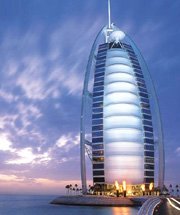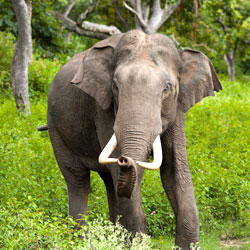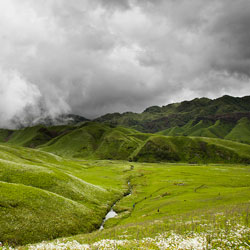
- Home
- Travel Packages
- Top Destination
-
Travel Attraction
By Category
Top Attraction

- Travel Agents
- Car Rentals
- Hotels

Dimapur, the the ancient capital of the Kachari tribe, is the largest city located in Nagaland. This city came into existence after bifurcating from Assam in the year 1963. The original name of Dimapur is Dong-Siri that means a ravine of the peaceful habitation. The region of Dimapur was ruled by the tribals of Dimasa Kachari and today, it stands amid the alluring tourist destinations located in Nagaland. Entrenched on the banks of the River Dhansiri, Dimapur is elevated 476 feet above the sea level. It spans a gross area of 120 sq. km. A major portion of its land is a craggy plain where the crops like wheat and sugarcane are grown. The climate of Dimapur is classified as moderate. It encounters different temperatures amid the year. During the summers, the median mercury level touches 37°C and during the winters, it falls down at 12°C. It also receives an ample amount of rainfall during the monsoon season. Dimapur houses a group of Jain temples that were constructed in the same year when India got independence. All the intricate temples are devoted to Lord Mahaveer and hold his idol in different postures in the pious sanctum. The other areas like Niuland & Chumukedima are well-known for their scenic surroundings.
Explore More
Kohima is an alluring district located in the Indian state of Nagaland. It was founded in the late 18th-century by the British established themselves in Naga Hills. Earlier, Kohima was known by the name of Kewhira. The Britishers weren't able to pronounce the name and thus, they came up with its modification Kohima. Presently, it is a beguiling travel destination in the North-eastern side of India. Kohima is located in the beautiful Naga Hills. With an elevation of 4,738 feet above the sea level, it sprawls over an entire area of 20 sq. km. A major portion of the land of Kohima is a craggy plain. The climate of this region is classified as a tropical monsoon. It encounters harsh summers with an average temperature of 39°C. During the winters, the median mercury level rests at 14°C. Kohima receives heavy rainfall with an annual average of 4500 mm. There are beautiful travel destinations located in Kohima. The hilly regions of Kohima are the perfect picnic goal, The State Museum, Nagaland War Cemetery and the local churches are the prime attractions that shouldn't be missed in Kohima.
Explore More
Mokokchung is a beautiful district located in the Indian state of Nagaland. This district, after Kohima and Nagaland, is known as the 3rd important urban hub in Nagaland. The soil of Mokokchung has produced some well-known panjandrums in different sectors. At present, Mokokchung is reckoned as a well-known tourist destination in Nagaland. The city of Mokokchung is elevated 4,374 feet above the sea level and is shrouded amid the misty hills. From these hillocks, various small streams emanate that serve as the major source of water for the locals. The climate of Mokokchung is classified as mild in nature. It experiences pleasant temperatures throughout the year. The median level of mercury ranges between 20°C-27°C during summers and gradually falls below 10°C in winters. It receives an ample amount of rainfall during the monsoons as well. Mokokchung serves as a beguiling tourist destination. The Naga Hills get bedecked beautifully during the festivals of Christmas, New Year, Moatsu Fest and Tsungremong festival. The whole of Mokokchung is ornamented beautifully. Other nearby travel destinations are Ungma Village, Longkhum Valley, The caves of Peren, Fusen kei, Mongzu Ki & Langpangkong.
Explore MoreGolden Triangle - East India Tour
7 Days/ 6 Night
Kolkata - Puri - Imphal - Agartala - Dimapur
6 Nights Dimapur - Kohima - Imphal Tour
7 Days/ 6 Night
Imphal - Dimapur - Kohima
Best North East Tour Package
14 Days/ 13 Night
Guwahati - Shillong - Tawang - Kaziranga - Kohima - Imphal - Silchar - Cherrapunji - Mawlamyaing - Bomdila - Bago - Pathein
6 Nights and 7 Days - North East Jewels
7 Days/ 6 Night
Dimapur - Kohima - Imphal
Vibrantly colorful, all lush fertile, exquisitely picturesque, Nagaland represents magnificent beauty made by nature. Nagaland was formally introduced in the year of 1963 as the Indian Union's 16th state. It is located in India extreme north east, surrounded on the north and west by Assam, on north by Arunachal Pradesh, on the east by Burma (Myanmar) and on the south by Manipur. It is one of the smallest states of India having an area of 16579 Kms 2 and population more than 1,988,000. The Naga Hills which have Saramati as the highest peak, run through Nagaland. The chief rivers which flow through this state include Doyang, Dikhu, Dhansiri, and Jhanji. The people of Nagaland, Nagas are deeply religious and fun loving following tradition of folklore, handicrafts, music and dance. The capital of Nagaland is Kohima. Nagaland has 15 main tribes is a land of verdant and lush forests and beautiful landscapes.
History of Nagaland
Nagaland's ancient history is obscure. The territory of Naga remained divided between northeast frontier agency and Assam after the independence of India in the year of 1947. The Government of India set up a single administrative unit for Naga under the rule of India in 1957. In the year of 1960, the Government of India made Nagaland an India's self governing state. Nagaland was inaugurated in the year of 1963. But still, Naga separatists kept on demanding autonomy and one administrative unit consisting of all the areas inhabited by Naga crossing some of the states of north east. After a long history of insurgency stemmed with ceasefire agreements and talks between central government and Naga rebels, at present, Nagaland is free from all the conflicts.
Nagaland is fractioned into seven districts namely, Kohima, Mokokchung, Phek, Zunheloto, Wokha, Twensang and Mon. the terrain is rugged, mountainous and rugged. Saramati is the highest peak in the district of Twensang having a height of 3840 meters above sea level. The chief rivers which flow through this state include Doyang, Dikhu, Dhansiri, and Jhanji. There is only one well known lake called as Lacham located to the Mehir's east.
Arts and Crafts of Nagaland : Since ages, Nagaland, a land full of resources, has excelled in the field of conventional art and crafts. One can easily find an extensive array of craftsmanship on domestic articles and other objects requiring painstaking effort. The efforts of true craftsmanship can be witnessed in the form of weaves, baskets, pottery, wood carves, jewellery, metal works and bead works. House posts, Morungs and village gates found in most of Nagaland reflect the perfection of craftsmanship attained by the local people. Morungs are recreational clubs, education centers or the guardhouses used for special ceremonies. It may vary in size and function based on different tribes. Morung’s pillars adorn the carefully craved human figurines, horn bills, elephants, pythons, tigers and other designs.
Basketry : The bamboo baskets of the weavers of Khiamngan and Khonoma village in Tuensang District are recognized for their complicated weaves that require extreme carefulness. These baskets are known for their aesthetic values and utility. Fine cane and bamboo pieces are worked into mats and headgears. As the weaves gained popularity over the years, numerous companies ventured into and opened the gateway of the international markets for the local weavers.
Weaving : Weaving and spinning is the all exclusive hobby of women of Nagaland. Vivid bags, jackets and shawls are woven using this skill. Loin loom or the ‘black strap is the most common loom used for the weaving purposes. Although these days fly shuttle loom too is fast picking up. The dyes used to color are extracted from natural sources like the roots of the plants and barks. Each tribe has different motifs and uses different colors based upon the tribal legends.
Woodcarving : Wood carving is in the blood of Naga people. This art form can be distinguished into three heads, chiefly decoration of Morungs (the man’s communal houses), funeral images erected and headhunting. Although, nearly all the tribes are bestowed with this skill, the Phom, Konyaks and the Wanchos tribes are the ones that have the best command of this craftsmanship. With commercialization of this art form, the local craftsmen have been able to use their skill to earn themselves a living.
Pottery : The Naga people make pots that are simple and do not have any artistic masterpiece engraved or embossed over them. It is only because of the fact that these are for the functional purpose only. Although some of the motifs and designs present on the pottery are inspired from the design and pattern of the textiles. Tseminyu and Ungma are the regions which are famous for their pottery. At first, the pot is given its basic shape over the pottery wheel, then it is heated and then later rice water is boiled in it to remove the clay’s and increase its durability.
Metal Work : Spears, ornaments, Chisels and items of utilities are the proof of Naga’s mastery over the art of metal work. Nagas are very much attached to their weapons, which may be due to the fact that in past they majorly depended on these weapons for their survival. From tribe to tribe these weapons differ in shape, size and pattern. Rengmas tribe amongst all the tribes is considered as the best blacksmiths.